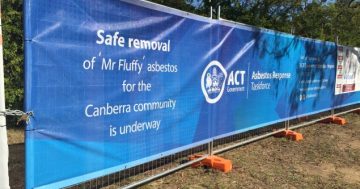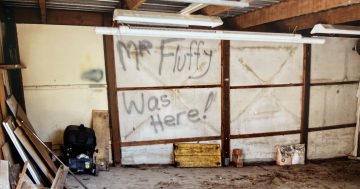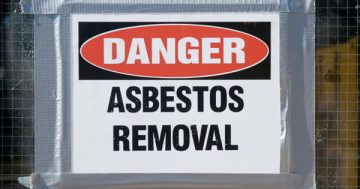
Between 1968 and 1979, private ACT contractor Mr Fluffy insulated people’s homes by pumping loose asbestos fibres into the roof cavities of houses in Canberra. In 1989, the Federal Government acknowledged the devastating health risks of loose asbestos and conducted an investigation of homes in the ACT constructed before 1980. It was discovered that 1.5 per cent of ACT homes built before 1980 contained loose asbestos fibre insulation.
As the ACT Government only came into existence in 1989, the disaster was the responsibility of the Federal Government – and still is. As such, the Federal Government funded a 100 million-dollar Loose Asbestos Insulation Removal Program. Obviously, it was not successful. This year, it has come to light that, so far, 1049 homes still contain this deadly material.
Since this year’s discovery, the ACT Government has established a dedicated taskforce and disbursed in excess of 1.1 million dollars in emergency cash relief to residents who have been adversely affected. With bipartisan support, the ACT Government has moved swiftly, concluding that a mass buy-back and demolition scheme would be the most desirable outcome. Last week Senator Eric Abetz listened to the stories of people affected by the crisis, and an announcement on the Commonwealth’s contribution is imminent within days or weeks.
In my opinion, there have been a few unhelpful hiccups of late. The ACT Government has mailed out stickers that are to be affixed by the homeowner to meter boxes and switch boards of the affected properties. The point of the stickers is to warn tradespeople in the future that they may be working on a property that contains loose asbestos fibres. The penalty for not displaying the stickers before the beginning of next year is $4,500. Instead of potentially frightening already traumatised residents, surely the ACT Government could just take it upon themselves to affix the stickers – and without the threat of penalty.
Additionally, founder of the Fluffy Owner’s and Residents’ Action Group Brianna Heseltine has this week defended her decision to conceal that she has recently joined the ALP and has political ambitions. What is clear from the fiasco is that the major parties have attempted to recruit the community advocate for the 2016 election in the light of her rising public profile. Heseltine may take heed of that timeless Labor rallying cry for the feminist movement which was ‘the personal is political’, and you can’t hide one from the other.
Regardless of those hiccups, what is most important to all concerned is that those who are affected by this crisis are cared for by a reasonable response from the Federal Government. It seems that Canberra waits together in silent solidarity, hoping for the best with bated breath… and whispering.




















